MOBILE MATH – Math on the Go
www.mobilemath.ca
|
2 - Numeracy - Multiplying
|
|
Name - Video Link - Downloads
|
Summary – Examples Covered
|
Screen Shot
|
|
2.1
– Numeracy – Multiplying - Positive Numbers - Intro
Video
Link 2.1
Downloads:
Smart
Notebook Lesson 2.1
Task
2.1 – Word
Task 2.1 - Pdf
|
Learning Goal:
By the end of this lesson I should be able to MULTIPLY single digit positive numbers together WITHOUT the use of a calculator (technology).
Techniques: Area Model (intro), Number Model
Examples:
(a)
8 x 3
(b)
4 x 6
(c)
9 x 7
|

|
|
2.2
– Numeracy – Multiplying - Area Model
Video
Link 2.2
Downloads:
Smart
Notebook Lesson 2.2
Task
2.2 – Word
Task 2.2 - Pdf
|
Learning Goal:
By the end of this lesson I should be able to MULTIPLY single and double digit positive numbers together using an AREA MODEL; WITHOUT the use of a calculator (technology).
Techniques: Area Model
Examples:
(a)
8 x 3
(b)
4 x 13
(c)
14 x 21
(d)
64 x 25
|
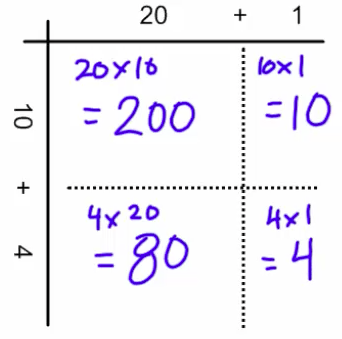
|
|
2.3
– Numeracy – Multiplying - Area Model 2
Video
Link 2.3
Downloads:
Smart
Notebook Lesson 2.3
Task
2.3 – Word
Task 2.3 - Pdf
|
Learning Goal:
By the end of this lesson I should be able to MULTIPLY double and triple digit positive numbers together using an AREA MODEL; WITHOUT the use of a calculator (technology).
Techniques: Area Model
Examples:
(a)
4 x 13
(b) 38 x 25
(c)
274 x 46
|
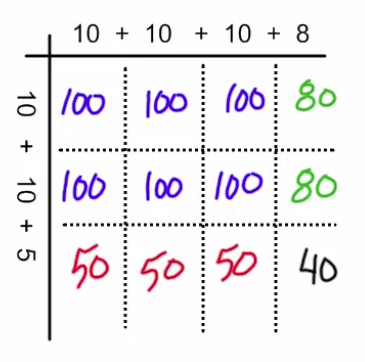
|
2.4
– Numeracy – Multiplying - Distributive Property
Video Link 2.4
Downloads:
Smart
Notebook Lesson 2.4
Task 2.4 – Word
Task 2.4 - Pdf |
Learning Goal:
By the end of this lesson I should be able to MULTIPLY single and double digit positive numbers together using the DISTRIBUTIVE PROPERTY of MULTIPLICATION; WITHOUT the use of a calculator (technology).
Techniques: Area Model and Distributive Property
Examples:
(a)
4 x 13
(b)
8 x 21
(c)
6 x 75 |
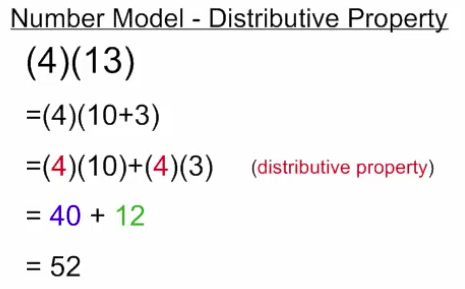 |
|
2.5
– Numeracy – Multiplying - Distributive Property 2
Video Link 2.5
Downloads:
Smart
Notebook Lesson 2.5
Task 2.5 – Word
Task 2.5 - Pdf
|
Learning Goal:
By the end of this lesson I should be able to MULTIPLY double and triple digit positive numbers together using the DISTRIBUTIVE PROPERTY of MULTIPLICATION; WITHOUT the use of a calculator (technology).
Techniques: Area Model and Distributive Property
Examples:
(a)
18 x 25
(b)
28 x 85
(c)
24 x 15
|
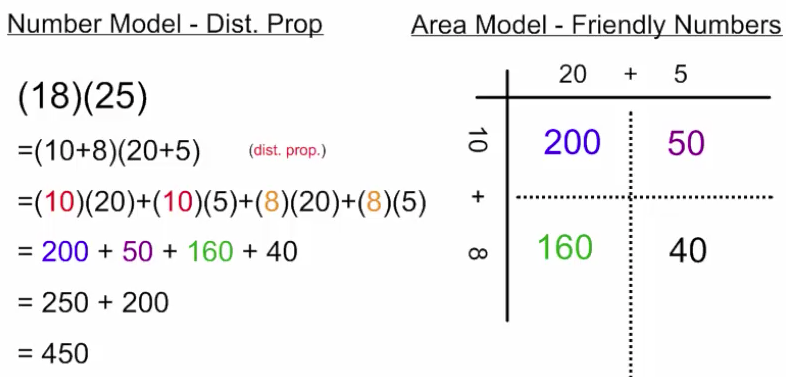
|
2.6
– Numeracy – Multiplying - Column Model
Video Link 2.6
Downloads:
Smart
Notebook Lesson 2.6
Task
2.6 – Word
Task 2.6 - Pdf
|
Learning Goal:
By the end of this lesson I should be able to MULTIPLY double and triple digit positive numbers together using a COLUMN MODEL; WITHOUT the use of a calculator (technology).
Techniques: Area Model and Column Model
Examples:
(a)
13 x 4
(b)
25 x 18
(c)
85 x 28 |
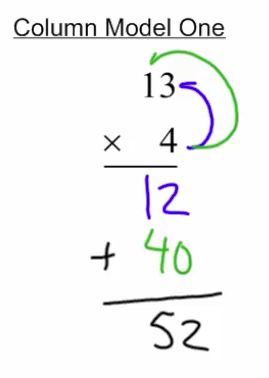 |
|
2.7
– Numeracy – Multiplying - Column Model 2
Video Link 2.7
Downloads:
Smart
Notebook Lesson 2.7
Task
2.7 – Word
Task 2.7 - Pdf
|
Learning Goal:
By the end of this lesson I should be able to MULTIPLY double and triple digit positive numbers together using a COLUMN MODEL; WITHOUT the use of a calculator (technology).
Techniques: Area Model and Column Model
Examples:
(a)
12 x 45
(b)
125 x 24
(c)
435 x 124
|
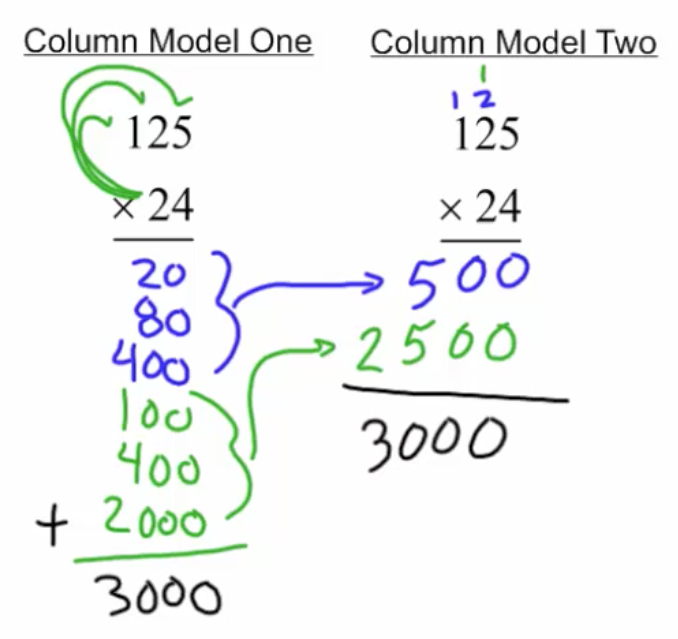
|
2.8
– Numeracy – Multiplying - One Decimal Place
Video Link 2.8
Downloads:
Smart
Notebook Lesson 2.8
Task
2.8 – Word
Task 2.8 - Pdf
|
Learning Goal:
By the end of this lesson I should be able to MULTIPLY together a positive number and a number with ONE or TWO decimal places, WITHOUT the use of a calculator (technology).
- Multiplying by a decimal that is less than one, product should get smaller. (6)(0.2) = 1.2
Techniques: Area Model and Column Model
Examples:
(a)
(7)(0.1)
(b)
(4)(0.6)
(c)
(5)(0.9)
(d)
(3)(0.75) |
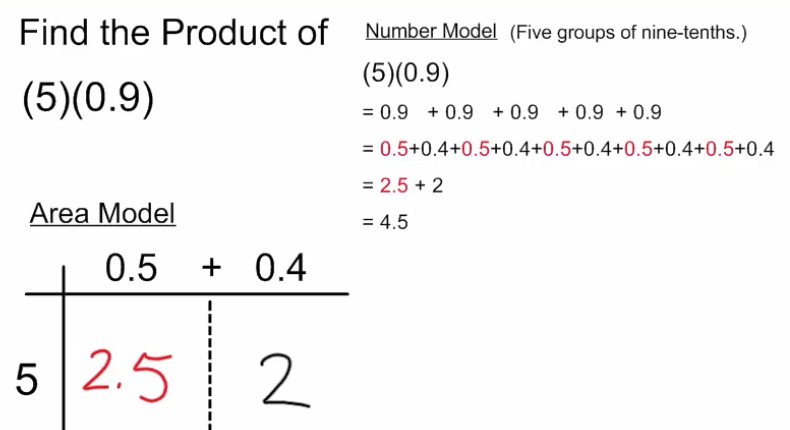 |
2.9
– Numeracy – Multiplying - Two Decimal Places
Video Link 2.9
Downloads:
Smart
Notebook Lesson 2.9
Task
2.9 – Word
Task 2.9 - Pdf
|
Learning Goal:
By the end of this lesson I should be able to MULTIPLY together two decimal numbers (tenths), WITHOUT the use of a calculator (technology).
• Multiplying by a decimal that is less than one, product should get smaller. (6)(0.2) = 1.2
• Multiplying by a decimal that is larger than one, product should get larger. (6)(1.2) = 7.2
Techniques: Area Model and Column Model
Examples:
(a)
(3)(4.1)
(b)
(4.5)(1.5)
(c)
(6.2)(1.5) |
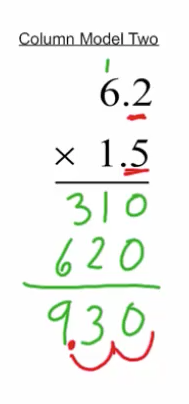 |
2.10
– Numeracy – Multiplying - Two Decimal Places 2
Video Link 2.10
Downloads:
Smart
Notebook Lesson 2.10
Task
2.10 – Word
Task 2.10 - Pdf
|
Learning Goal:
By the end of this lesson I should be able to MULTIPLY together two decimal numbers (hundredths), WITHOUT the use of a calculator (technology).
Techniques: Column Model
Examples:
(a)
(6.5)(1.5)
(b)
(3.52)(2.4)
(c)
(6.78)(3.45)
|
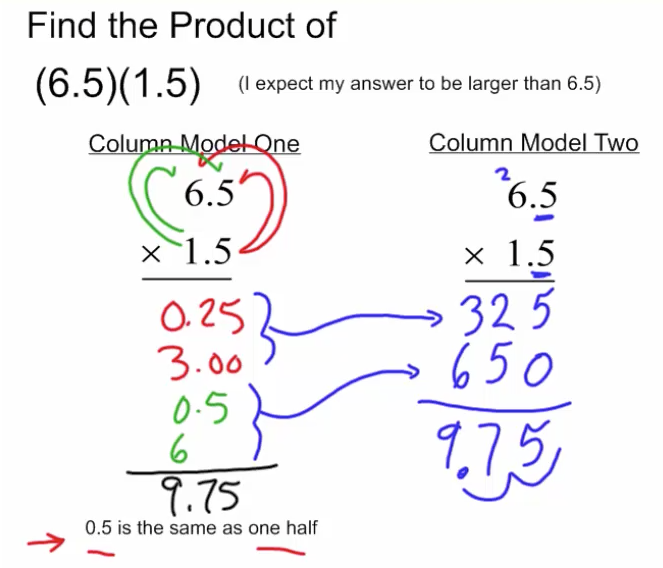
|
2.11
– Numeracy – Multiplying - Positive number times a negative number
Video Link 2.11
Downloads:
Smart
Notebook Lesson 2.11
Task
2.11 – Word
Task 2.11 - Pdf
|
Learning Goal:
By the end of this lesson I should be able to Multiply a positive number and a negative number together, WITHOUT the use of a calculator (technology).
- When we multiply a positive number and a negative number together, the final product (result) ends up being a negative value.
- (+) x (-) = (-)
Techniques: Number Model and Area Model
Examples:
(a)
(3)(-4)
(b)
(9)(-8)
(c)
(48)(-125) |
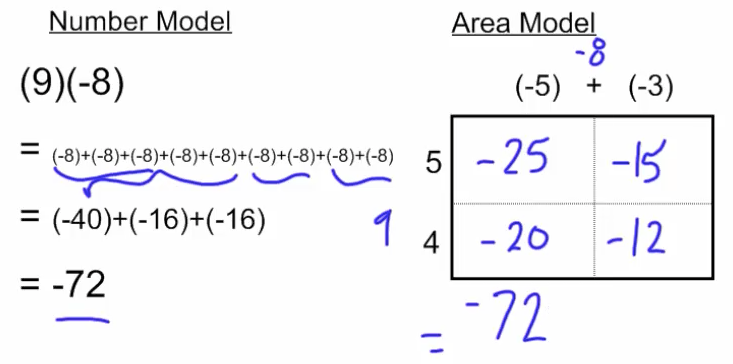
|
2.12
– Numeracy – Multiplying - Negative number times a negative number
Video Link 2.12
Downloads:
Smart
Notebook Lesson 2.12
Task
2.12 – Word
Task 2.12 - Pdf
|
Learning Goal:
By the end of this lesson I should be able to Multiply a negative number and a negative number together, WITHOUT the use of a calculator (technology).
- When we multiply a positive number and a negative number together, the final product (result) ends up being a negative value.
- (+) x (-) = (-)
- When we multiply a negative number and a negative number together, the final product (result) ends up being a negative value.
- (-) x (-) = (+)
- An ''odd'' number of negative signs in a multiplication or division problem leads to a negative answer.
- An ''even'' number of negative signs in a multiplication or division problem lead to a positive answer.
Techniques: Number Model and Area Model
Examples:
(a)
(-9)(-8)
(b)
(4)(-9)(-3)
|
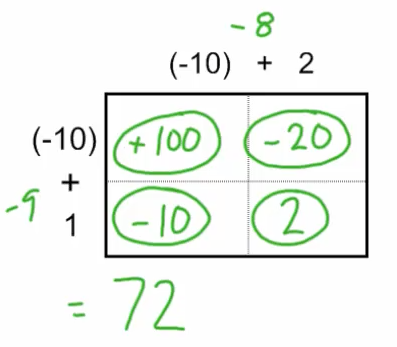
|
2.13
– Numeracy – Multiplying - Area Model revisited
Video Link 2.13
Downloads:
Smart
Notebook Lesson 2.13
Task
2.13 – Word
Task 2.13 - Pdf
|
Learning Goal:
By the end of this lesson I should be able to Multiply positive and negative numbers together using an Area Model, WITHOUT the use of a calculator (technology).
Techniques: Area Model
Examples:
(a)
(-9)(-8)
(b)
(98)(18)
(c)
(66)(-25)
|
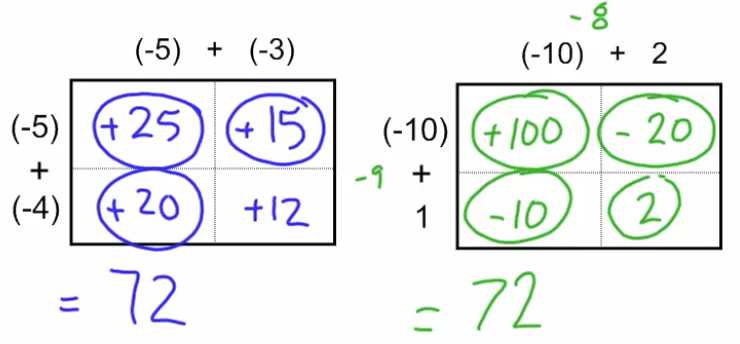
|
2.14
– 2.15 - Numeracy – Multiplying - Review and Final Assessment
Downloads:
Task 2.14 – Review - Word
Task 2.14 - Review - Pdf
Final Assessment 2.15 - Word
Final Assessment 2.15 - Pdf |
Summative Activities for the Multiplying Unit |
|